A new study conducted by Florida International University and Bonefish & Tarpon Trust has revealed that Florida redfish are contaminated with high concentrations of human pharmaceuticals. The study follows a similar one from last year which revealed the widespread presence of pharmaceutical contaminants in Florida bonefish.
The results from the year-long research project, which was funded by Bonefish & Tarpon Trust and conducted by Florida International University’s Coastal Fisheries Research Lab, revealed the presence of 17 different pharmaceuticals in the blood plasma samples taken from 113 redfish. The samples were collected from nine different Florida estuaries in Pensacola, Apalachicola, Cedar Key, Tampa Bay, Charlotte Harbor, Florida Bay, Indian River Lagoon, St. Augustine, and Jacksonville.
On average, the redfish sampled had 2.1 different pharmaceuticals in their tissues, though fish samples collected in certain locations revealed as many as 3.3 different contaminants. Only seven of the sampled fish had no signs of contaminants. Previous studies have demonstrated that human pharmaceuticals can remain active in fish species even at very low doses and can impact almost all aspects of fish behavior, including feeding, migration, social interactions, and reproductive behavior and fitness.
Though the results of the study are less shocking than its bonefish-focused counterpart from 2022—which found dramatically higher levels of human drugs in Florida's bonefish—researchers stress that the study’s findings are indicative of a statewide issue that poses an “urgent concern.”
“These studies of bonefish and redfish are the first to document the concerning presence of pharmaceuticals in species that are important to Florida's recreational fisheries,” said Dr. Jennifer Rehage, FIU professor and the study’s lead researcher. "Given the impacts of many of these pharmaceuticals on other fish species and the types of pharmaceuticals found, we are concerned about the role pharmaceuticals play in the health of our fisheries. We will continue this work to get more answers to these concerning questions.”

According to Bonefish & Tarpon Trust president Jim McDuffie, this widespread pharmaceutical contamination in Florida’s fish species represents not only a threat to the fish themselves, but to the industries that depend on healthy fisheries — industries that have an enormous economic impact throughout the state of Florida.
“The results underscore the urgent need to modernize Florida’s wastewater treatment systems,” said BTT President and CEO Jim McDuffie. “Human-based contaminants like these pose a significant threat to Florida’s recreational fishery, which has an annual economic impact of $13.9 billion and directly supports more than 120,000 jobs.”
Much like with the previous bonefish study, researchers are highlighting the results of this more recent effort as a call for Florida to enhance its water treatment facilities.

“Florida is a leader in addressing water quality issues and wastewater infrastructure, including converting septic systems to sewage treatment,” said Kellie Ralston, Bonefish & Tarpon Trust’s Vice President for Conservation and Public Policy. “The results of this study indicate that there are additional opportunities for improvement by retrofitting existing wastewater treatment plants with innovative technologies, like ozone treatment, to remove pharmaceuticals and requiring such technology on new wastewater facilities.”





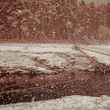








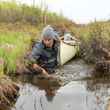




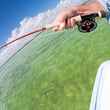
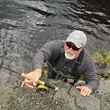









Comments